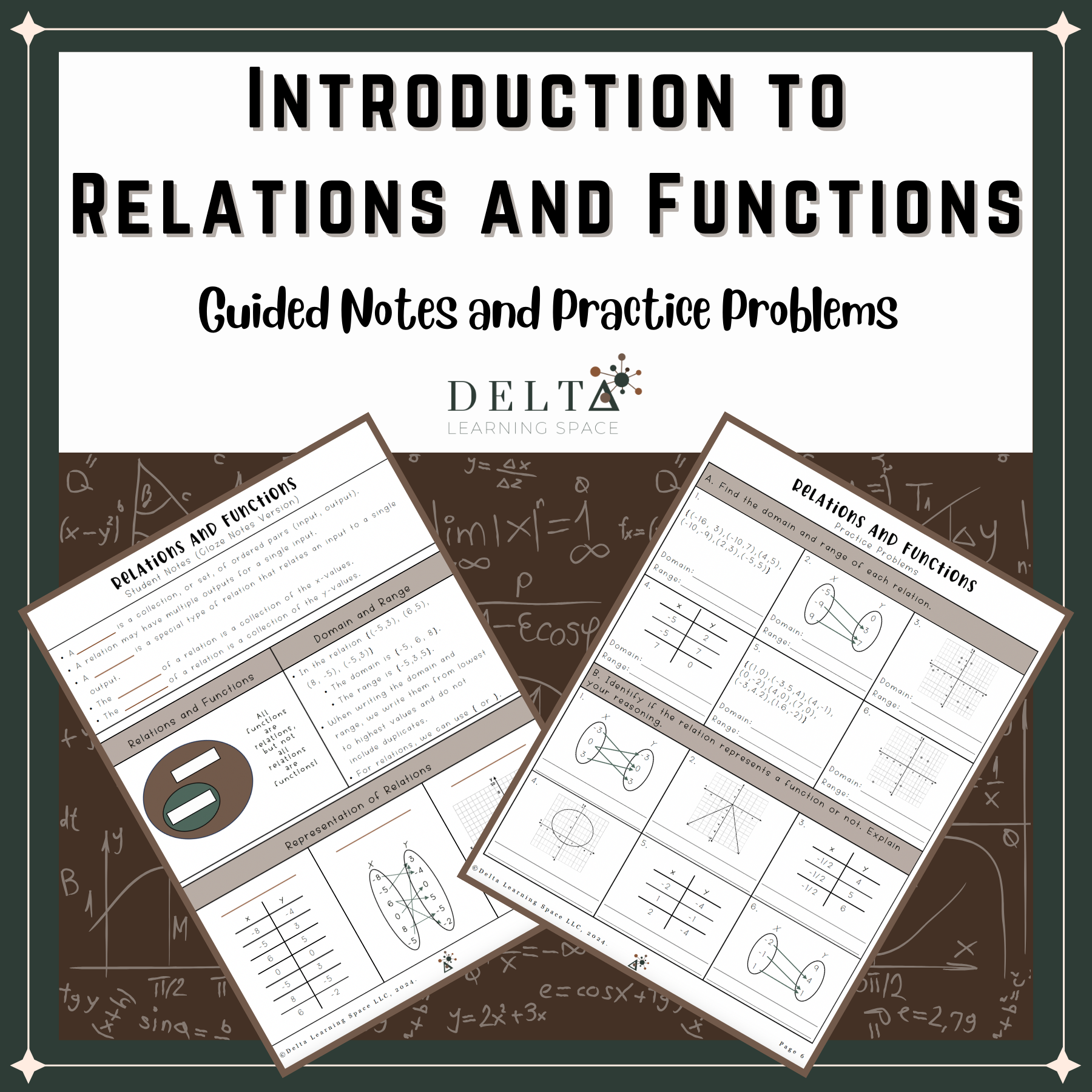Finding The Domain and Range of Continuous Functions
Building on our understanding of relations and functions, our previous lesson emphasized the distinction between these concepts. Now let’s dive into the intricacies of expressing the domain and range for continuous functions using two distinct notation formats: Interval Notation and Inequality Notation.
If you need a refresher on Relations and Functions, check out our related post and come back!
Critical Review
Domain: The x-values present in a function.
Range: The y-values present in a function.
Important Note: To represent inequalities on a graph, we use closed circles and open circles to show whether the end value is included or not. A closed circle shows that the value is included. An open circle shows that the value is not included.
Interval Notation
Interval notation employs brackets or parentheses to describe sets of numbers. It uses the format “lower bound, upper bound,” with [ or ] indicating inclusion and ( or ) indicating exclusion. A notation doesn’t have to use only brackets or only parentheses. If one bound is included but the other is not, we use the appropriate symbol for each.
We use (-∞, +∞) for functions representing all real values.
Consider the following example graph:
Starting with the domain, notice the arrow extending beyond our view to the left, suggesting the function continues indefinitely in the x-direction. This means our function will continue to go to negative infinity, -∞, for our lower bound. On the right-hand side, we see an open circle at x=2 for our upper bound.
This leads us to express the domain in interval notation as (-∞, 2), signifying continuous existence for x-values greater than negative infinity and less than 2.
Examining the range, observe the function extending downward beyond our view. We can use -∞ again for our lower bound. Then, looking for the maximum point on the graph, we see that the function reaches as high as y=0 for our upper bound at a point that exists on the graph.
Thus, the range is expressed as (-∞, 0], indicating continuous existence for y-values greater than negative infinity and less than or equal to 0.
Domain: (-∞, 2)
Range: (-∞, 0]
Inequality Notation
Inequality notation uses symbols such as < or ≤ to convey sets of numbers. The notation is written with the lower bound on the left and the upper bound on the right, with x (for domain) or y (for range) in the middle. If one bound goes to either +∞ or -∞, we can use only one inequality symbol to represent the domain and range. The symbol < is used for exclusion and the symbol ≤ is used for inclusion.
Revisiting our example graph
The known domain bounds are -∞ and 2. In inequality notation, we express the domain as x < 2, signifying continuous existence for x-values greater than negative infinity and less than 2.
For the range with bounds of -∞ and 0, the inequality notation becomes y ≤ 0, indicating continuous existence for y-values greater than negative infinity and less than or equal to 0.
Domain: x < 2
Range: y ≤ 0
Conclusion: Details Matter
Whether using interval or inequality notation, always start with the lowest value and end with the highest. Pay careful attention to the details—when expressing the domain, focus on x-values (horizontal direction); when expressing the range, focus on y-values (vertical direction). The inclusion or exclusion of bounds determines the choice of symbols, making attention to details crucial in effectively communicating mathematical concepts.






